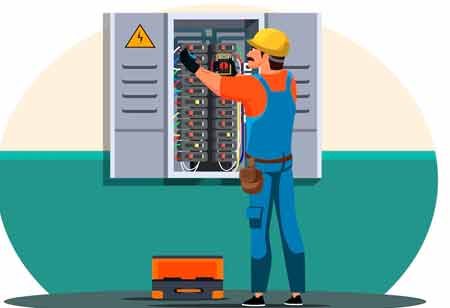Thank you for Subscribing to Electrical Business Review Weekly Brief
I agree We use cookies on this website to enhance your user experience. By clicking any link on this page you are giving your consent for us to set cookies. More info
Is Indoor Switchgear Worth the Investment?
Indoor metal composite switchgear has distinct components contained in separate compartments separated by metal barriers. These compartments are then grounded for added security. Metal-clad switchgear typically includes a detachable breaker compartment, which is also referred to as a pull-out design

By
Electrical Business Review | Monday, June 23, 2025
Stay ahead of the industry with exclusive feature stories on the top companies, expert insights and the latest news delivered straight to your inbox. Subscribe today.
FREMONT, CA: Switchgear refers to all electrical components used in electrical systems to control and disseminate electricity. This category includes circuit breakers, contactors, and relays. When planning an electrical system, one of the most crucial decisions is where to locate the switchgear. For many applications, mounting the device outdoors makes sense. However, in some circumstances, locating the switchgear within the building is preferable.
Indoor switchgear is described as any switchgear designed specifically for installation in residential, commercial, or industrial buildings, as well as other enclosed places. In these cases, equipment is typically placed in a specialized area known as a switch room. The primary distinction between indoor and outdoor switchgear is that the former is shielded, whilst the latter is not and is exposed to wind, dust, rain, snow, and so on. Due to its position, indoor switchgear has various advantages over outdoor switchgear. But before we get into these benefits, it's vital to understand the numerous kinds of indoor switchgear and what they signify.
Some of the significant types of indoor switchgear are listed below:
Metal-enclosed switchgear: The metal-enclosed indoor switchgear is surrounded by metal plates, and the equipment is organized within the shell. This protects both switchgear and workers. The enclosure is then typically outfitted with ventilation apertures, doors, or removable covers to facilitate component monitoring and inspection.
Metal composite switchgear: Indoor metal composite switchgear has distinct components contained in separate compartments separated by metal barriers. These compartments are then grounded for added security. Metal-clad switchgear typically includes a detachable breaker compartment, which is also referred to as a pull-out design.
Some of the notable benefits of indoor switchgear are discussed below:
Greater safety: Indoor electrical switchgear is typically installed in metal enclosures, which makes it significantly safer than outdoor switchgear. Enclosures provide safety from live electrical components by adding an extra layer of protection against electric shock or electrocution.
Switchgear located indoors provides a better level of safety, making it appropriate for usage in residential, industrial, and institutional environments. This is crucial to ensuring the safety of electrical equipment and workers and others who may be present near the unit.
Enhanced reliability: Another significant advantage of indoor switchgear over outdoor switchgear is increased reliability. Because it is installed indoors, it is less vulnerable to adverse weather conditions that might damage it.
As a result, power surges and currency fluctuations are less likely to impact switchgear. In the long run, this can increase system reliability, resulting in fewer outages over time, among other advantages.








